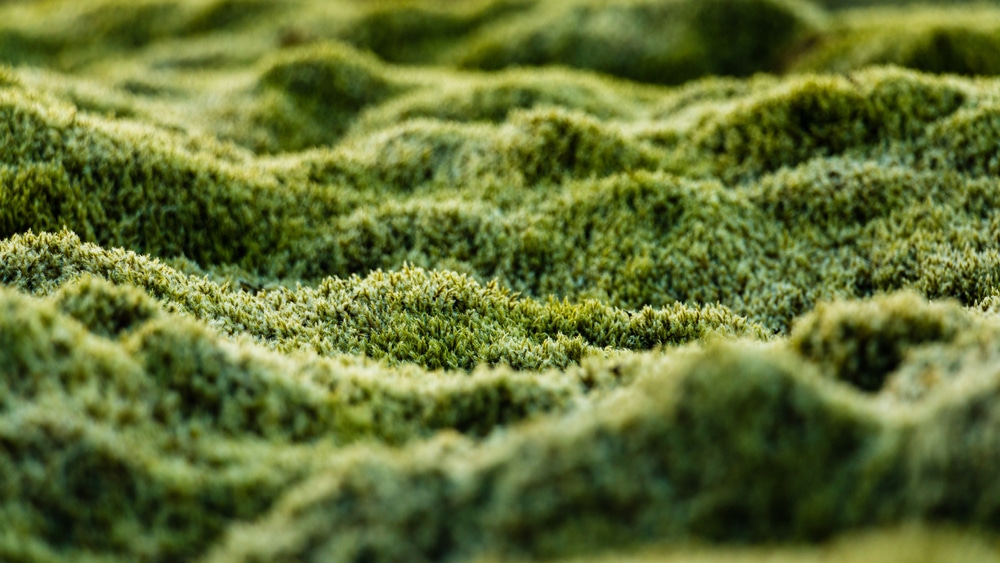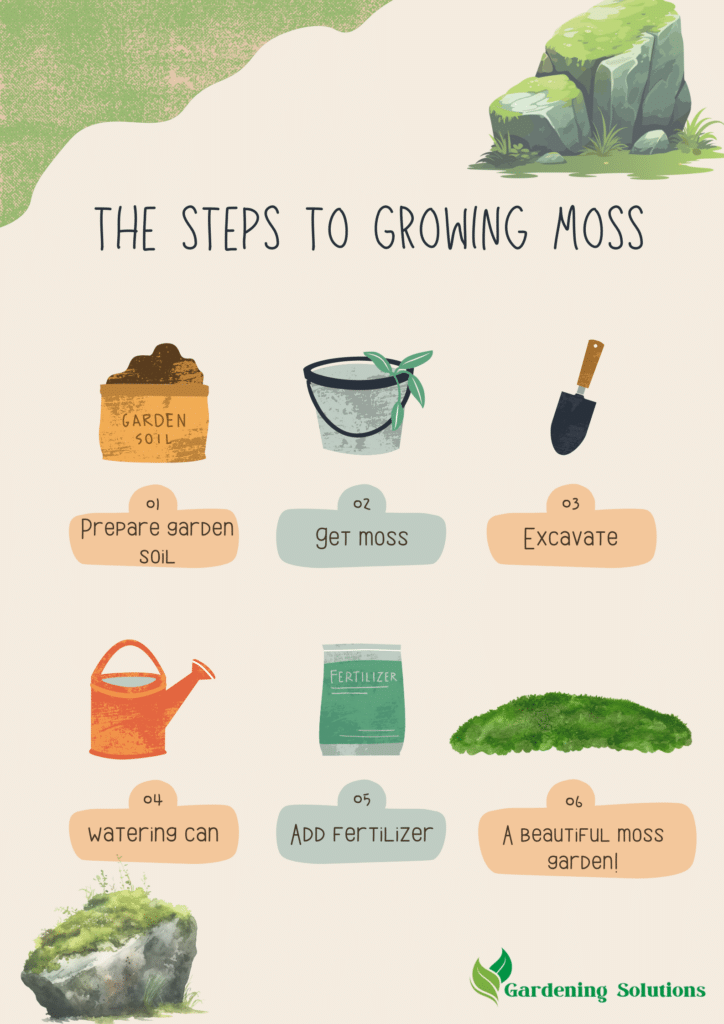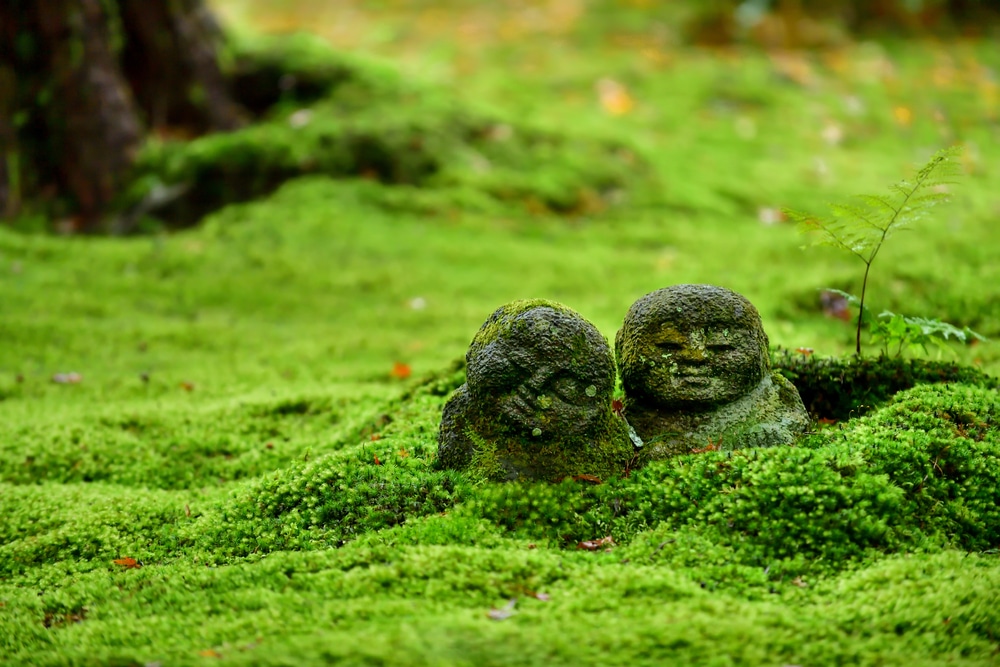Table of Contents
Do you want that secret garden look? And walk that velvety garden bed? Here’s the perfect answer to this; learn how to grow moss in your backyard! Gardening is a beautiful therapeutic feeling, especially if you’re doing that in the back of your very own yard. But have you ever thought of moss gardening? The best thing about mosses is that you can grow them on either your rock walls or your garden beds for a soft velvety appearance and feel. Enchanting plants like mosses give gardens and landscapes a special touch. We are going to cover all the essential parts of cultivating moss, PLUS cover your garden bed with moss, whether you want to create a mossy ground cover or learn how to grow these adaptable plants. First, let us take a look at what moss exactly is.

What is Moss?
Have you ever felt some velvety feeling under your feet while walking in a dewy garden? If you have ever stopped to look at and feel the surface of a moss bed in the winter, it will feel like you are touching a damp sponge. You’ll also understand that, despite the initial impression of softness, a moss bed is a multi-textured world. A tiny, non-vascular plant, moss grows best in damp, shaded areas. Moss does not yield seeds or blooms, in contrast to blooming plants. Instead, it spreads by creating a thick, green carpet that covers the ground, rocks, and tree trunks through spore reproduction. Because moss thrives in low-light and poorly drained environments, it’s a great option to add greens to difficult-to-garden locations where other plants might not.
Portulaca Grandiflora, or Moss Rose
The moss rose, on the other hand, is a flowering plant distinguished by its vivid, bright hues. Doubled flowered moss rose, sometimes called Portulaca grandiflora, is a common garden plant chosen for its spectacular blossoms and resistance to drought. Although it is sometimes mistaken for natural moss, the two differ regarding look and growing season requirements. The deer also tends to eat moss rose at times.
Planting moss rose seeds in the spring or early summer is best. Now, if you’re thinking, Can I plant moss rose in June? Indeed, June is an excellent time to sow fluffy moss rose seeds because they require warm soil temperatures to grow.

Ideal Conditions for Growing Moss
Before growing your moss, have an idea of the best conditions and times you can grow it in.
Light Conditions
- Moss generally likes low light and grows well in shadowed regions, because seeds indoors need light to grow.
- While some types may withstand shade, most thrive in total darkness.
Soil Conditions
- Choose soil that holds onto moisture yet drains appropriately to prevent soggy situations.
- Clay soil is better once it is supplemented with organic matter or sand.
You can cultivate a prosperous, thriving moss habitat by ensuring these things.

Steps to Grow Moss
Let us now learn how you can start growing your moss.
Prepare the Area
- Trash and weeds should be removed from the planting area.
- Turn the Soil and remove weeds with a pitchfork or other gardening implement.
- To get a textured yet level surface, rake the surface.
Test and Amend Soil
- Use pH test strips to determine the Soil’s pH.
- Add manure or compost to bring the pH down if it’s higher than 5.5.
- A somewhat acidic soil environment is what you want.
Plant and Water
- Give the area plenty of water and let it soak for around half an hour.
- Scatter sheets or pieces of moss onto the ground, one inch wide.
- Use pegs or light rocks to firmly anchor the moss after pressing it down. Also don’t forget to take care of your moss garden.

A Look at the Types of Moss Varieties
Mosses differ in hue and texture. Here’s a brief look at the types;
- Cushion Moss (Leucobryum glaucum): Moist, dark areas are preferred; dense, rounded clumps.
- Sheet Moss (Hypnum spp.): Hypnum spp., or sheet moss, are flat, spreading mats perfect for covering extensive areas under shade.
- Rock Cap Moss (Dicranum spp.): Sometimes known as rock cap moss, is an irregular, tufted plant that grows best in moist, shady environments.
- Irish moss (Sagina subulata): Dense mats that grow in partial shade and the sun, with tiny leaves and white flowers.
- Reindeer Moss (Cladonia rangiferina): Cladonia rangiferina, sometimes known as reindeer moss, is a branching lichen that requires cooler weather and well-draining soil.
- Creeping Moss (Polytrichum commune): Polytrichum commune, or creeping moss, is a dense mat with upright stems that grows best in acidic, shady, and damp soil.

Final Thoughts
As we come to an end, moss grows rich, green carpets in wet, shaded spots with well-draining soil. Keep the soil continually moist, clean the soil, and transplant or sow moss for successful development. Different textures, such as cushions and sheet moss, are available in most kinds. On the other hand, to propagate moss roses require full sun and soil that drains properly. With vivid red, pink, and yellow blossoms, they are deer-resistant, drought-tolerant, and easy to grow. For optimal effects, plant moss rose seeds in the spring. Just like you plant your clover plants.
In conclusion, the endurance and beauty of your garden are enhanced when you combine moss with moss roses, which provide gorgeous flowers with brilliant colors and ground cover.
Enjoy your evening nights on a soft moss garden!
